How and Why the Ocean’s Health is Declining, and What We Can Do to Help
Learn ocean acidification facts in our video above, or keep reading for a comprehensive ocean acidification facts sheet.
What is Ocean Acidification? Ocean acidification is the process by which the ocean becomes more acidic as increased carbon in the atmosphere is dissolved by the ocean. These increased carbon levels are caused by human activities since the Industrial Revolution, especially burning of fossil fuels. Pollution, such as fertilizer runoff from agriculture, also contributes to ocean acidification.
Ocean acidification has negative effects on marine life, the ocean ecosystem and food chain, and humans who depend on the ocean for food or to make a living. These ocean acidification facts describe the scope of the problem, impacts of ocean acidification, and potential solutions.
Learn more about the process of ocean acidification: Ocean Acidification Infographic
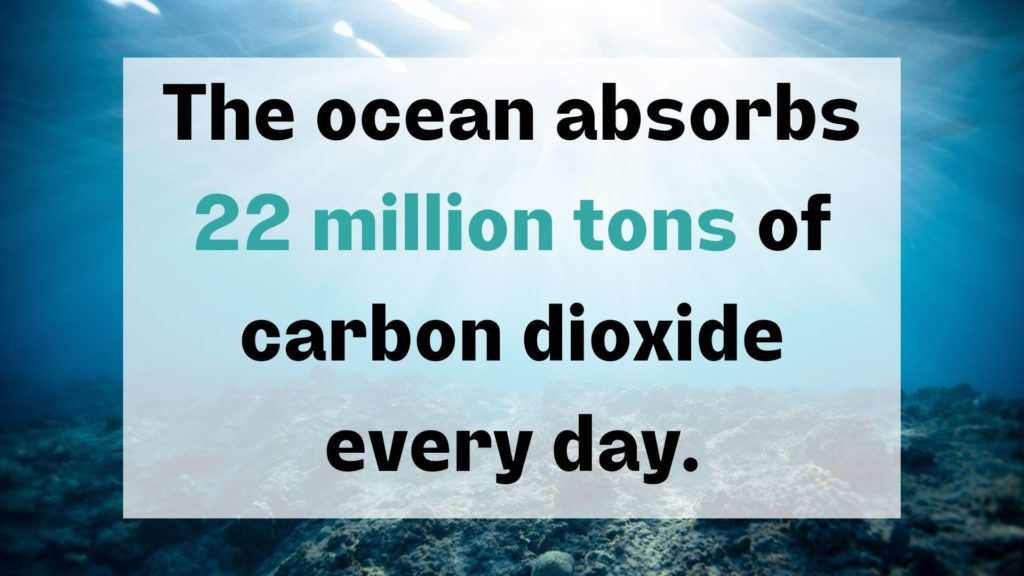
What’s Happening? Main Points
- The ocean absorbs 22 million tons of carbon dioxide daily, or 525 billion tons over the past 200 years (nearly half the carbon emission over this time) (Feely et al. 2006).
- Because of this carbon absorption, the ocean’s surface pH (a measure of acidity where lower numbers = more acidic) has decreased from 8.2 to 8.1, which represents a 30% increase in acidity (NOAA 2019).
- Continuing as we are now, ocean pH is expected to decrease by another .3 in the next century (NOAA 2019). This prediction is made with high certainty.
- China currently emits the most carbon dioxide, creating 28% of global emissions, followed by the U.S. at 15% (UCS 2020).
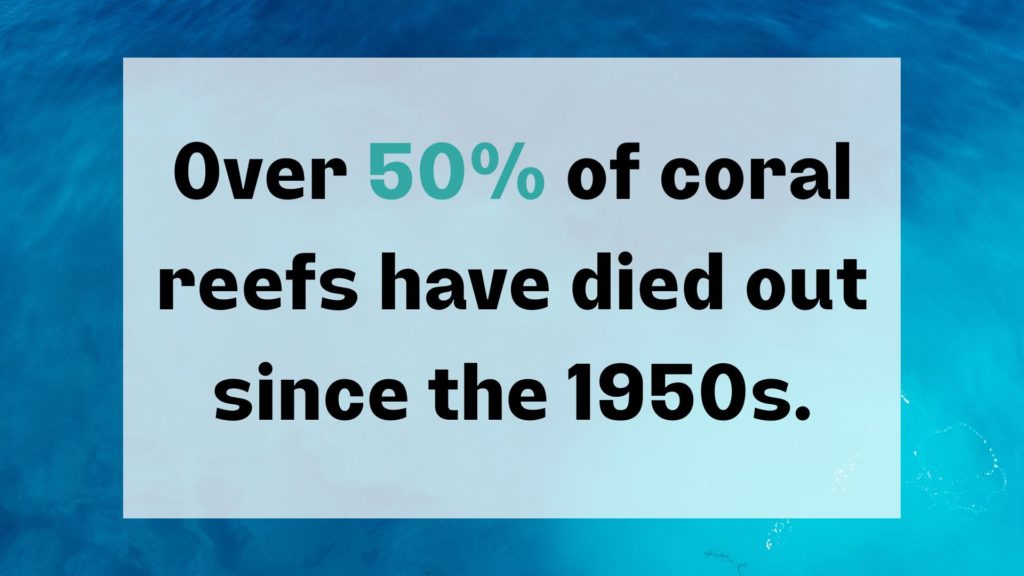
Impacts of Ocean Acidification on Marine Life
- Ocean acidification reduces the ability of organisms to build their shells or skeletons, as there is not enough calcium carbonate in the water to do so. Over 50% of coral reefs have died out since the 1950s (Eddy et al. 2021). Not only does this kill coral, but it removes an important ocean habitat for other creatures.
- Higher acidity impacts fish as well, causing lowered immune response, metabolic decline, and reproductive problems (Feely et al. 2006).
- Shifts and reductions in ocean biodiversity occur; as some animals die off, such as shell-building organisms, others may take their place.
- Changes to the food chain occur as small organisms at the bottom of the food chain are reduced as a food source. Die-off of small animals means larger animals, like salmon, that are important within the food chain and commercially, will not have enough food. Ocean acidification impacts all marine life.
Socio-Economic Impacts of Ocean Acidification
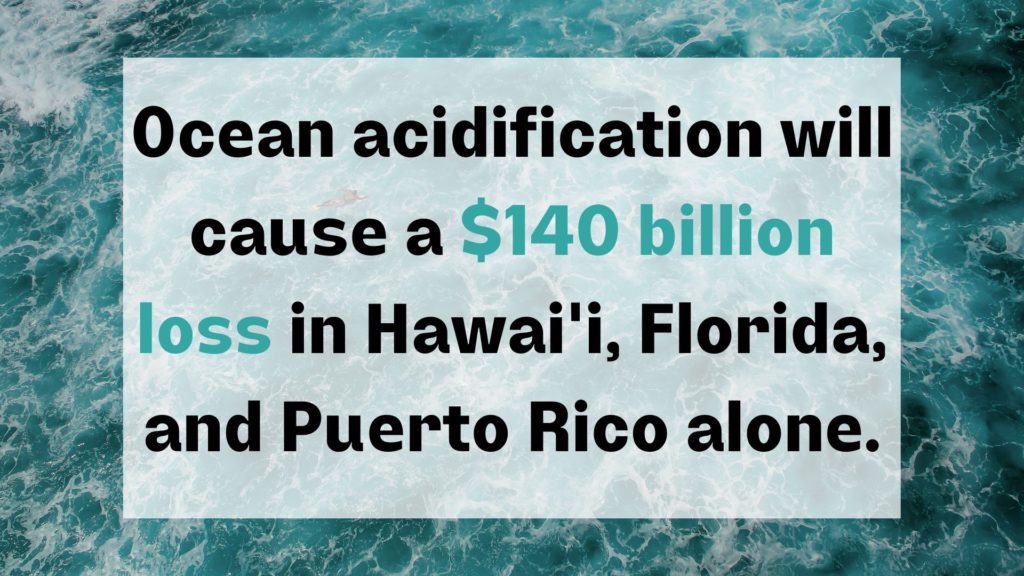
- Ocean acidification will reduce the size and change the distribution of global fish stocks, making fishing more difficult and impacting the global economy (Weatherdon et al. 2016; ). This will cause increased food insecurity and decreased income for coastal communities.
- Ocean acidification is already causing failures at fish hatcheries, and has been since at least 2007 (Barton et al. 2012).
- Models predict a decrease in global fish production of 2-13% (Bopp et al. 2013).
- Coral reefs provide food, income, recreation and coastal protection against erosion to many communities. Loss of reef-based incomes due to acidification will cause a $140 billion loss in just Hawaii, Florida, and Puerto Rico (EPA 2017).
- If carbon emissions continue as they are now, shellfish harvest in the U.S. will see an estimated $230 million in costs (EPA 2017).
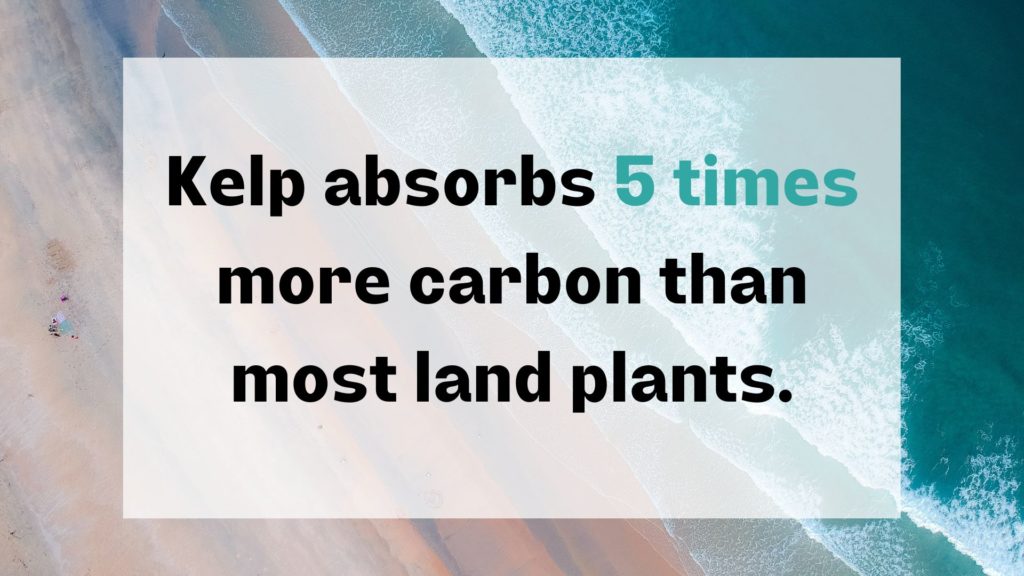
Solutions to Stop Ocean Acidification
- The best way to stop ocean acidification is to reduce our global carbon emissions. We currently emit 34 billion tons of carbon dioxide per year, which is more than 5 times more than 1950 (Ritchie & Roser 2020). Lowering our carbon emissions will decrease the amount that is absorbed by the ocean.
- Seaweed farming can reduce ocean acidification by absorbing carbon dioxide. Kelp absorbs 5 times more carbon than most land plants (Coomber 2019)
- Grow more phytoplankton (but overall effect on food chain unknown)
- Geoengineering may help reduce carbon in the atmosphere. New technologies may remove carbon from the ocean surface and sequester it elsewhere, such as the ocean floor (Williamson & Turley 2012). The effectiveness and long-lasting effects of geoengineering require more research.
Legislation
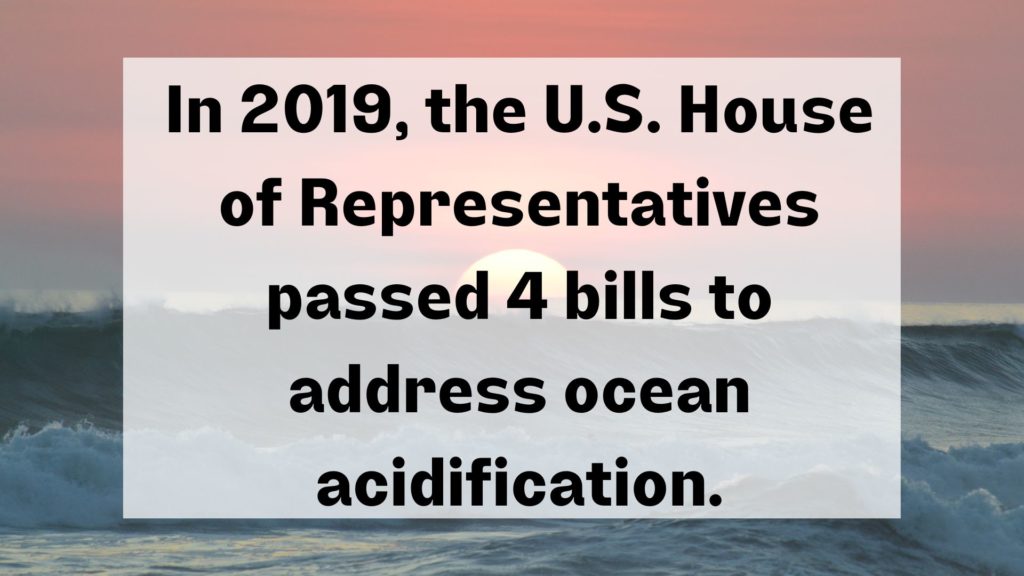
- California’s 2018 Ocean Acidification Action Plan is a ten year plan that lays out actions to address ocean acidification. It employs six strategies including reducing pollution that causes acidification and creating living systems to store carbon.
- Several U.S. states such as Oregon, Montana, and Maine have enacted legislation or created task forces to address ocean acidification (EPA 2020).
- In 2019, the U.S. House of Representatives passed 4 bills that aim to address ocean acidification (H.R.s 1716, 1237, 1921 and 988).
- Several European countries, most notably Norway, have legislation that aims to research and address ocean acidification (Galdies et al. 2020).